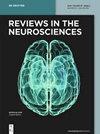大脑自动调节、扩散性去极化以及对脑损伤和缺血靶向治疗的影响
IF 3.4
3区 医学
Q2 NEUROSCIENCES
引用次数: 0
摘要
脑自动调节是脑血管的一种内在肌源性反应,可在全身血压变化时保持稳定的脑血流水平。它通过毛细血管前收缩和扩张,在各种血压水平下均有效。自调节难以直接测量,而间接确定大脑自调节状态的方法本身就需要一定的假设。脑自动调节功能受损的患者可能面临脑缺血的风险。代谢受损患者缺血的核心机制之一很可能是触发扩散性去极化(SD)事件,并最终导致终末(或缺氧)去极化。因此,在考虑缺血风险时,脑的自动调节和 SD 是相关联的。在这篇范围综述中,我们将讨论一系列测量大脑自动调节的方法、其理论优缺点以及支持其效用的现有临床证据。然后,我们将讨论大脑自动调节功能受损与 SD 事件发生之间新出现的联系。这种方法为更好地了解个体患者的生理状况并提供有针对性的治疗提供了机会。本文章由计算机程序翻译,如有差异,请以英文原文为准。
Cerebral autoregulation, spreading depolarization, and implications for targeted therapy in brain injury and ischemia
Cerebral autoregulation is an intrinsic myogenic response of cerebral vasculature that allows for preservation of stable cerebral blood flow levels in response to changing systemic blood pressure. It is effective across a broad range of blood pressure levels through precapillary vasoconstriction and dilation. Autoregulation is difficult to directly measure and methods to indirectly ascertain cerebral autoregulation status inherently require certain assumptions. Patients with impaired cerebral autoregulation may be at risk of brain ischemia. One of the central mechanisms of ischemia in patients with metabolically compromised states is likely the triggering of spreading depolarization (SD) events and ultimately, terminal (or anoxic) depolarization. Cerebral autoregulation and SD are therefore linked when considering the risk of ischemia. In this scoping review, we will discuss the range of methods to measure cerebral autoregulation, their theoretical strengths and weaknesses, and the available clinical evidence to support their utility. We will then discuss the emerging link between impaired cerebral autoregulation and the occurrence of SD events. Such an approach offers the opportunity to better understand an individual patient’s physiology and provide targeted treatments.
求助全文
通过发布文献求助,成功后即可免费获取论文全文。
去求助
来源期刊

Reviews in the Neurosciences
医学-神经科学
CiteScore
9.40
自引率
2.40%
发文量
54
审稿时长
6-12 weeks
期刊介绍:
Reviews in the Neurosciences provides a forum for reviews, critical evaluations and theoretical treatment of selective topics in the neurosciences. The journal is meant to provide an authoritative reference work for those interested in the structure and functions of the nervous system at all levels of analysis, including the genetic, molecular, cellular, behavioral, cognitive and clinical neurosciences. Contributions should contain a critical appraisal of specific areas and not simply a compilation of published articles.
 求助内容:
求助内容: 应助结果提醒方式:
应助结果提醒方式:


